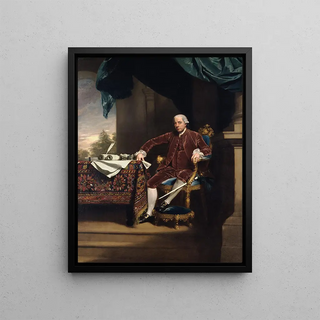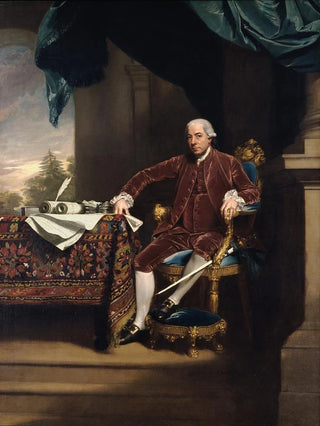Art print | Henri Laurens - John Singleton Copley


View from behind

Frame (optional)
Henri Laurens - John Singleton Copley art print captures a fascinating encounter between two distinct artistic eras. Referencing the portrait of the renowned American painter John Singleton Copley, Laurens, with his cubist style, redefines the codes of representation. This piece is much more than a simple art print; it is an invitation to delve into a dialogue between the past and the present, between the tradition of classical portraiture and modern abstraction. Viewers are invited to explore the subtleties of a composition where form and color intertwine to bring to life an iconic figure in art history.
Style and uniqueness of the art print
Laurens's style, characterized by clean lines and geometric shapes, introduces a new dimension to the depiction of Copley. The artist manages to capture the essence of the subject while freeing himself from the constraints of realism. Volumes are suggested through overlapping planes, creating a visual dynamism that draws the eye and stimulates the imagination. The chosen color palette, both rich and delicate, enhances contrasts while maintaining subtle harmony. Every element of the composition seems to dialogue with the others, revealing an emotional depth that transcends the simple portrait. By reinterpreting Copley, Laurens does not merely reproduce a face; he offers a reflection on identity and memory, inviting viewers to rediscover an artist who marked his time.
The artist and his influence
Henri Laurens, a major figure of cubism, established himself as an innovator within the early 20th-century art movement. His work reflects a period in full transformation, where artistic conventions were challenged. Laurens, as a pupil of Picasso, integrated elements of sculpture and painting, creating a unique visual language. His interpretation of iconic figures, such as John Singleton Copley, demonstrates his interest in the great masters while asserting his own artistic vision. Laurens's influence extends beyond his era, inspiring many contemporary artists to explore the boundaries of representation.

Matte finish

View from behind

Frame (optional)
Henri Laurens - John Singleton Copley art print captures a fascinating encounter between two distinct artistic eras. Referencing the portrait of the renowned American painter John Singleton Copley, Laurens, with his cubist style, redefines the codes of representation. This piece is much more than a simple art print; it is an invitation to delve into a dialogue between the past and the present, between the tradition of classical portraiture and modern abstraction. Viewers are invited to explore the subtleties of a composition where form and color intertwine to bring to life an iconic figure in art history.
Style and uniqueness of the art print
Laurens's style, characterized by clean lines and geometric shapes, introduces a new dimension to the depiction of Copley. The artist manages to capture the essence of the subject while freeing himself from the constraints of realism. Volumes are suggested through overlapping planes, creating a visual dynamism that draws the eye and stimulates the imagination. The chosen color palette, both rich and delicate, enhances contrasts while maintaining subtle harmony. Every element of the composition seems to dialogue with the others, revealing an emotional depth that transcends the simple portrait. By reinterpreting Copley, Laurens does not merely reproduce a face; he offers a reflection on identity and memory, inviting viewers to rediscover an artist who marked his time.
The artist and his influence
Henri Laurens, a major figure of cubism, established himself as an innovator within the early 20th-century art movement. His work reflects a period in full transformation, where artistic conventions were challenged. Laurens, as a pupil of Picasso, integrated elements of sculpture and painting, creating a unique visual language. His interpretation of iconic figures, such as John Singleton Copley, demonstrates his interest in the great masters while asserting his own artistic vision. Laurens's influence extends beyond his era, inspiring many contemporary artists to explore the boundaries of representation.






